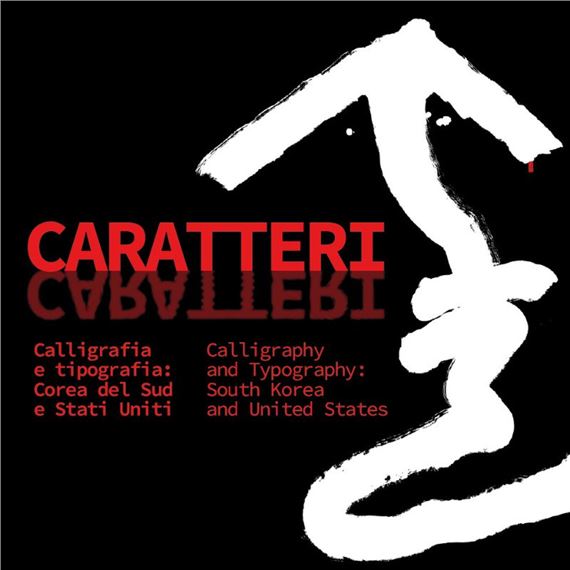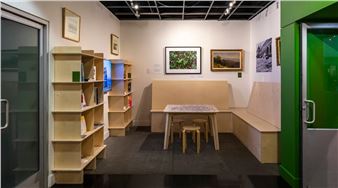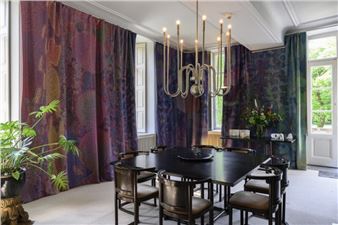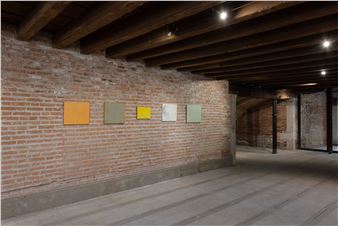CHARACTERS: Calligraphy and Typography: South Korea and United States
As part of the East West Calligraphy series, the Library of the Museo Correr presents for 2025 the exhibition CHARACTERS, hosted in the Sala delle Quattro Porte of the Museo Correr.
The exhibition brings together four contemporary artists from South Korea and the United States, juxtaposing their works with historical documents from the Library’s collection. The unifying theme is phonetic writing systems: the Korean alphabet Hangeul and the Latin alphabet.
The works of Kim Doo Kyung, Kang Byung-In, and Thomas Ingmire explore writing as a visual and musical gesture; Amos Paul Kennedy Jr., on the other hand, investigates its communicative and social power through letterpress printing. The exhibition thus becomes a dialogue between the intimate, human dimension of the handwritten sign and the collective communicative strength of the printed word.
The Korean artists work with Hangeul, the alphabet created in the 15th century to make writing accessible to the people. In their calligraphy, the shapes of vowels and consonants become vehicles for emotion and cosmological concepts, uniting gesture, mind, and breath in a meditative act that transforms writing into a spiritual practice.

Recommended for you
As part of the East West Calligraphy series, the Library of the Museo Correr presents for 2025 the exhibition CHARACTERS, hosted in the Sala delle Quattro Porte of the Museo Correr.
The exhibition brings together four contemporary artists from South Korea and the United States, juxtaposing their works with historical documents from the Library’s collection. The unifying theme is phonetic writing systems: the Korean alphabet Hangeul and the Latin alphabet.
The works of Kim Doo Kyung, Kang Byung-In, and Thomas Ingmire explore writing as a visual and musical gesture; Amos Paul Kennedy Jr., on the other hand, investigates its communicative and social power through letterpress printing. The exhibition thus becomes a dialogue between the intimate, human dimension of the handwritten sign and the collective communicative strength of the printed word.
The Korean artists work with Hangeul, the alphabet created in the 15th century to make writing accessible to the people. In their calligraphy, the shapes of vowels and consonants become vehicles for emotion and cosmological concepts, uniting gesture, mind, and breath in a meditative act that transforms writing into a spiritual practice.

 ARTISTS
ARTISTS
















